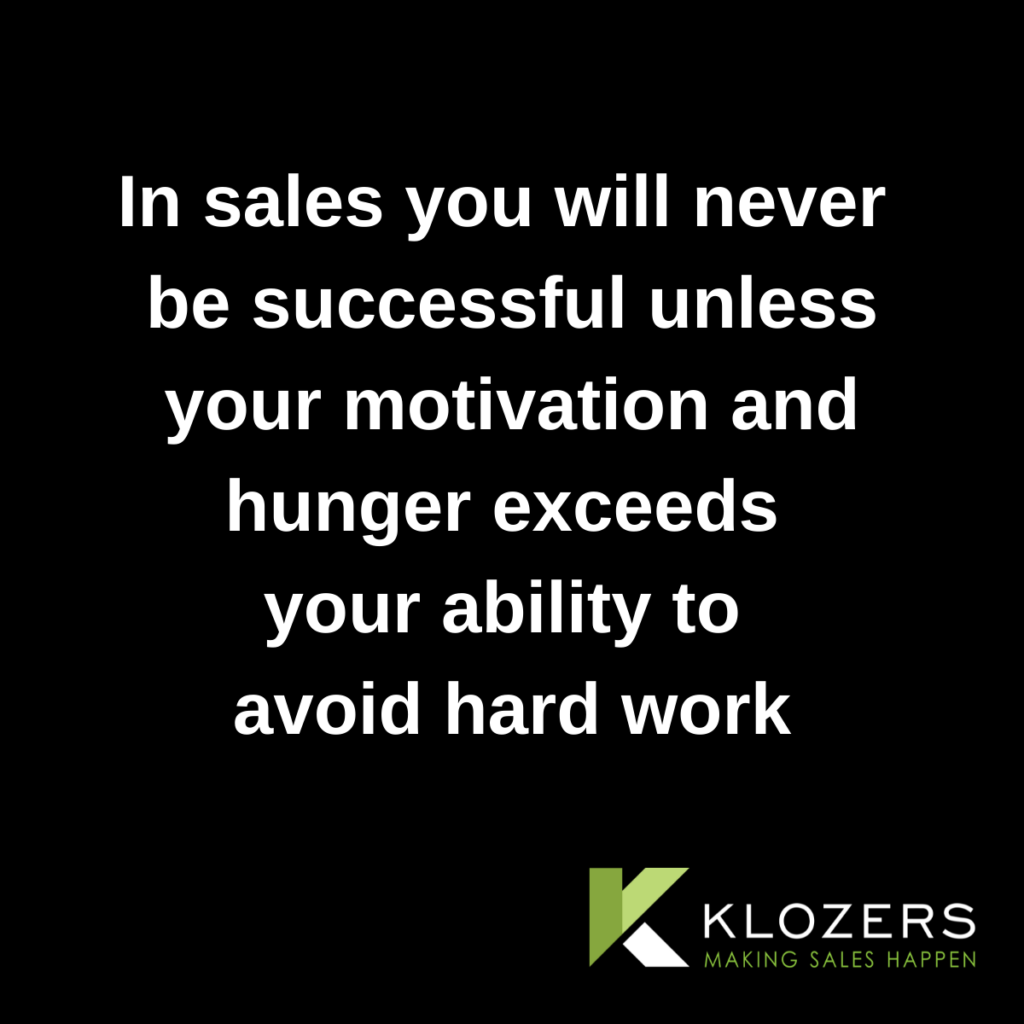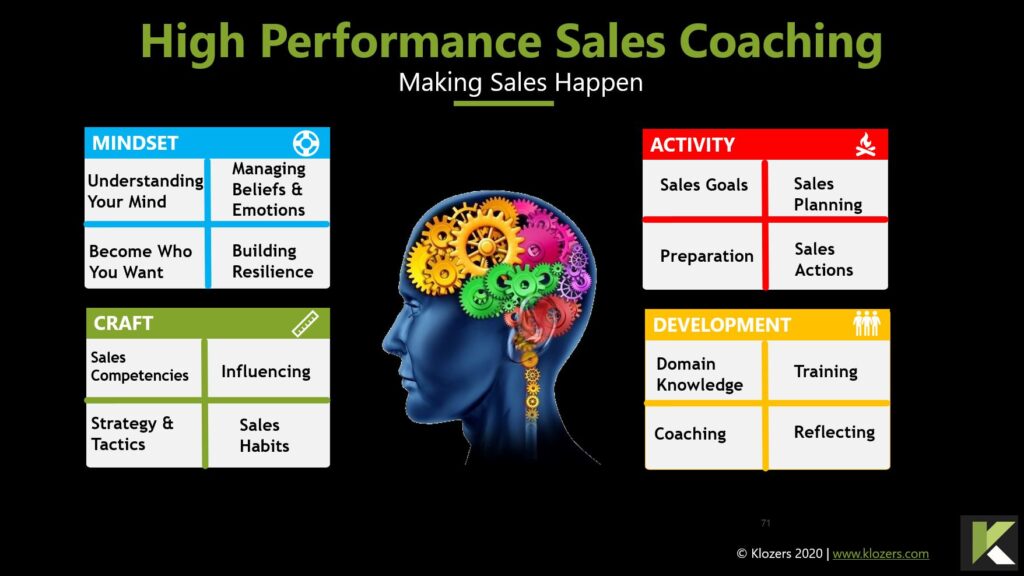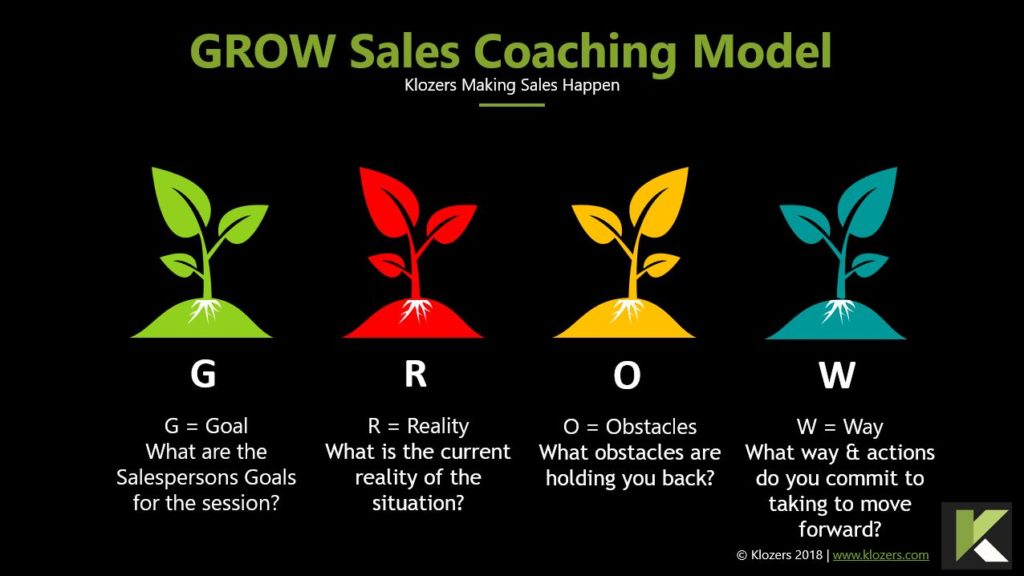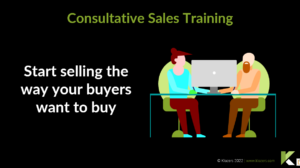At Klozers our Sales Performance coaching uses Sales Scorecards, which ensure accountability for the students. This is first used to identify a baseline, which is used to kick start and structure the sales coaching. To be effective, sales coaching should look at sales in a holistic manner. This will include addressing the all the key components of sales success, which are Mindset, Sales Craft, Activity and Development.
All successful sales people have the right mindset for success. Throughout a sales career, it is impossible to achieve success on every call or presentation. As such, salespeople need to be resilient and bounce back from rejection. Controlling our mind is a hugely important part of a successful career in sales.
We can use simple Vision Boards to identify personal and business goals. Once these have been identified it’s important to draw a correlation between the two which helps ensure sales people are focussed on the goals of the business not just their own.
Craft covers the key sales skills and competencies required to be a successful sales professional. Most modern sales roles require a huge variety of sales skills, some of which are forever changing given the fast paced nature of sales and marketing.
Activity covers the important aspects of preparation, goals, sales planning and sales actions. Development covers an ongoing commitment to improving sales learning. Reflecting on past performance is an important aspect of this section. At regular intervals it is important that salespeople reflect on their performance and use this to adapt their techniques or seek additional coaching or training.
Often when reflecting, salespeople and most sales managers tend to focus on the negative aspects of performance (e.g. the bits that didn’t quite work), but it is equally as important to reflect on the positives. If a certain sales pitch has been successful, then salespeople should reflect on what went well, and how that can be implemented in other sales pitches.
Sales coaching can be conducted online or in person, in a group setting or on a 1-2-1 basis. Regardless of the delivery method, the same coaching models are used.
There is a wide range of sales coaching models available, however, at Klozers we use either the PEDAL model which is Directive Coaching or the GROW model. The easiest way to explain the differences are:
PEDAL – Directive in style. Solving someone’s problem for them.
GROW – Non Directive in style. Helping someone solve their own problem.
In the PEDAL model the process is:
P = Position. The coach positions the reasoning/need for a new sales skill or sales process.
E = Explain. The coach explains how the new skills work.
D = Demonstrates. The coach demonstrates how to execute the new sales skills.
A = Assess. The sales professional practices the new skill and the coach assesses their competency and provides feedback.
L = Links. The coach then links the new skill to the sales reps role and key objectives.
The PEDAL coaching model is commonplace in areas where the correct execution of a skill is paramount and no choice is allowed. For example, when sales professionals need to comply with regulatory procedures, or when sales people need to follow a prove sales process.
But what does the GROW model involve?
GROW stands for:
G = Goal. What are the salespersons goals for the session?
R = Reality. What is the current reality?
O = Obstacles. What obstacles are holding the salesperson or team back?
W = Way. What way and actions do you commit to taking to move forward?












